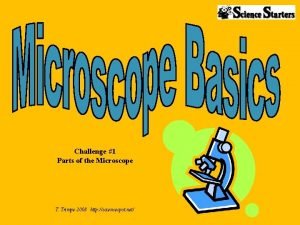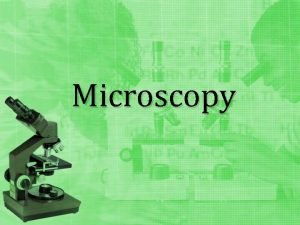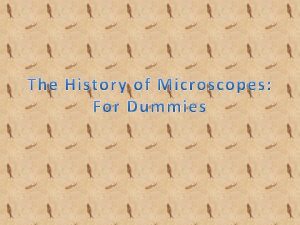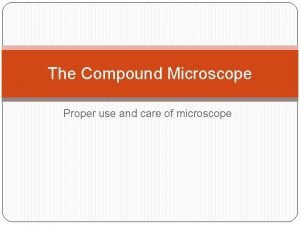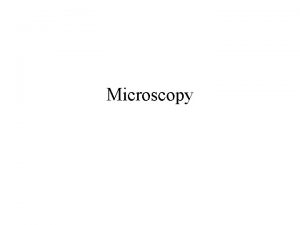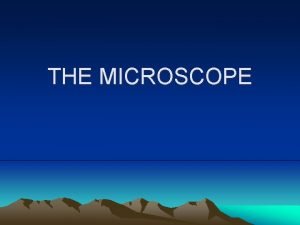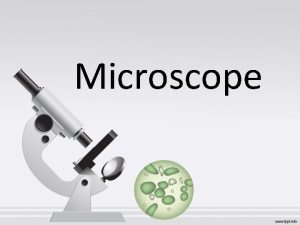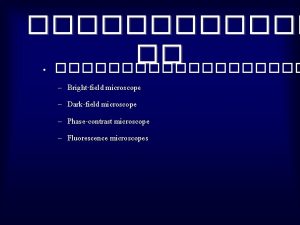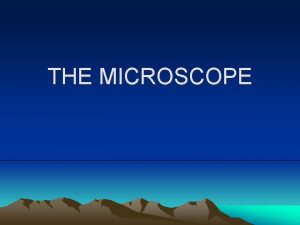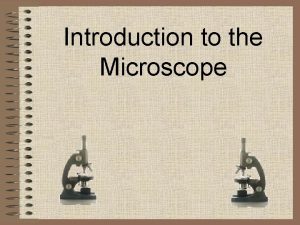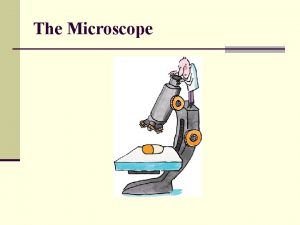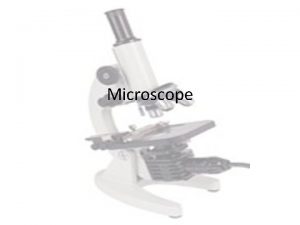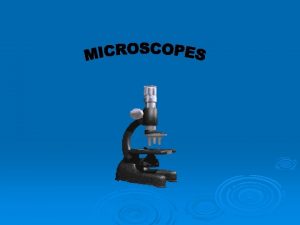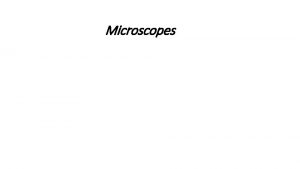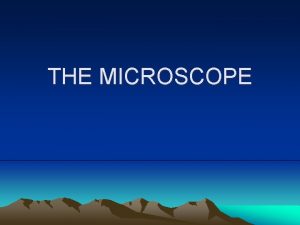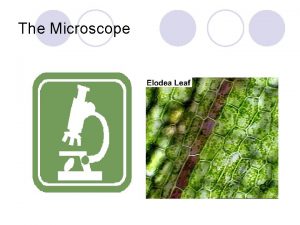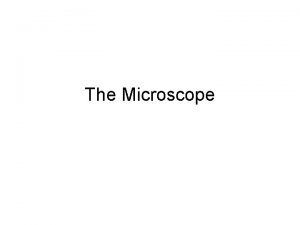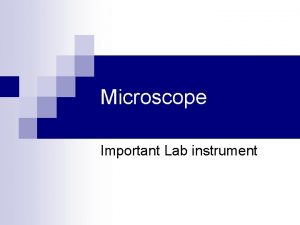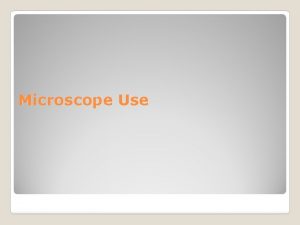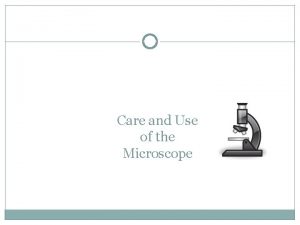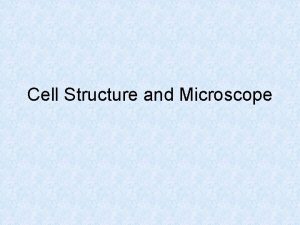Learning how to use the microscope There are

























- Slides: 25

Learning how to use the microscope

There are 2 kinds of microscopes: Simple: one lens (magnifying glass) Compound: 2 or more lenses *We use compound microscopes in class!

Parts of the Microscope 1. Revolving Nosepiece

Parts of the Microscope 2. Lens/Objective

Parts of the Microscope 3. Stage

Parts of the Microscope 4. Disc Diaphragm (controls amount of light) 1 = lowest setting/ 5 = highest setting

Parts of the Microscope 5. Light source

Parts of the Microscope 6. Base

Parts of the Microscope 7. Eyepiece

Parts of the Microscope 8. Arm

Parts of the Microscope 9. Stage Clips

Parts of the Microscope 10. Coarse Focus/ Adjustment (Big Knob)

Parts of the Microscope 11. Fine Focus/ Adjustment (Small Knob)

Calculating Magnification Multiply lens powers together!

• Eyepiece: Eyepiece 10 X by itself • Low Power: 4 X; red color; and a TOTAL magnification of 40 X mainly used for large objects/scanning • Medium Power: 10 X, yellow color; TOTAL magnification of 100 X • High Power: 40 X; blue color; and a TOTAL magnification of 400 X; mainly used for smaller objects/details

When you are ready to start: üMake sure it is on LOW power! üThe stage should be all the way down (you focus by slowly moving it up!) üCheck the light setting (should be at 1 -2 to start)

Other Things to Consider: Carrying the Microscope: Always use 2 hands!

Other Things to Consider: Never use the COARSE FOCUS KNOB while on HIGH power.

When putting the microscope away (at the end of the day): üIt should be on LOW power. üThe cord should be WRAPPED around the base. üThe stage should be all the way DOWN (do this with the coarse focus knob!) üThe light switch should be OFF

TROUBLESHOOTING What if you can’t get your object into focus? • Check that you have one of the lenses clicked into place • Check that your disc diaphragm is in place (not IN BETWEEN settings)

TROUBLESHOOTING What if you can’t get your object into focus? • Clean off your lenses using LENS PAPER. (Also, dirty slides are hard to focus on; so clean them, too!) • GO BACK TO LOW POWER AND START OVER!

• Instead of a beam of light, these microscopes use a beam of electrons as their source of illumination! Instead of using glass lenses to focus the light, they use a MAGNETIC field to focus the beam of electrons! • Used to see things at much higher level of detail • Can magnify images up to 1, 000 times!

There are 2 kinds: • SCANNING ELECTRON MICROSCOPES (SEM): Allows you to see the SURFACES of objects

There are 2 kinds: • TRANSMISSION ELECTRON MICROSCOPES (TEM): Allow you to see THROUGH an object.

Visit this Website to check out some really cool Electron Microscope Images and then answer the questions on your paper! http: //www. pbrc. hawaii. edu/bemf/microangela/
 Mikael ferm
Mikael ferm Light microscope vs electron microscope
Light microscope vs electron microscope Microscope mania compound light microscope
Microscope mania compound light microscope Cuadro comparativo de e-learning b-learning y m-learning
Cuadro comparativo de e-learning b-learning y m-learning Proper handling and use of a microscope
Proper handling and use of a microscope Which microscope did robert hooke use to study tree bark?
Which microscope did robert hooke use to study tree bark? Microscope uses
Microscope uses Compound microscope use
Compound microscope use Hát kết hợp bộ gõ cơ thể
Hát kết hợp bộ gõ cơ thể Lp html
Lp html Bổ thể
Bổ thể Tỉ lệ cơ thể trẻ em
Tỉ lệ cơ thể trẻ em Chó sói
Chó sói Glasgow thang điểm
Glasgow thang điểm Hát lên người ơi
Hát lên người ơi Kể tên các môn thể thao
Kể tên các môn thể thao Thế nào là hệ số cao nhất
Thế nào là hệ số cao nhất Các châu lục và đại dương trên thế giới
Các châu lục và đại dương trên thế giới Công thức tính độ biến thiên đông lượng
Công thức tính độ biến thiên đông lượng Trời xanh đây là của chúng ta thể thơ
Trời xanh đây là của chúng ta thể thơ Cách giải mật thư tọa độ
Cách giải mật thư tọa độ Làm thế nào để 102-1=99
Làm thế nào để 102-1=99 độ dài liên kết
độ dài liên kết Các châu lục và đại dương trên thế giới
Các châu lục và đại dương trên thế giới Thể thơ truyền thống
Thể thơ truyền thống Quá trình desamine hóa có thể tạo ra
Quá trình desamine hóa có thể tạo ra


